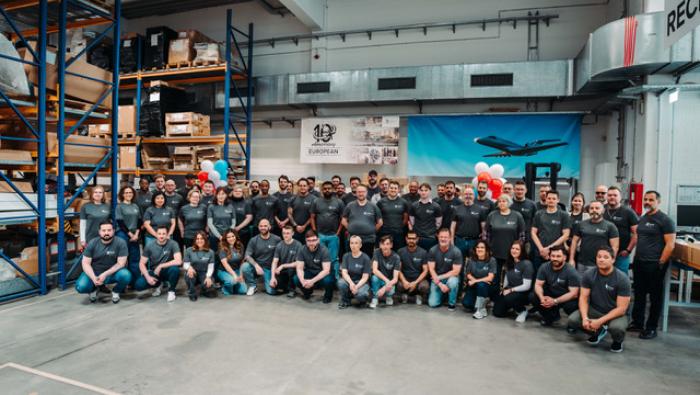West Star Aviation is continuing to look for select niches to extend its large and small business aircraft service offerings, while at the same time strengthening its FBO brand, according to Rick Brainard, general manager of the company’s Grand Junction, Colo. facility.
Last year, West Star opened a 78,000-sq-ft large jet service hangar and shop complex at Grand Junction and spent $1.1 million refurbishing the lobby area of its FBO. Brainard said the lobby and terminal upgrades were designed to make West Star more on par with FBOs in Vail or Aspen, since during ski season the facility often receives traffic diverted from those destinations due to weather or slot allocation. For diverted passengers, “this is their first impression of a bad trip, so why not leave them with an exceptional experience?” Brainard asked.
The facility also modernized aircraft handling and ground support equipment. “We have retooled in virtually every program, and that includes tugs and snowplows. We have reinvested considerably in this business,” Brainard said.
The new large jet complex features a 40,000-sq-ft hangar and 38,000 sq ft of office, parts and shop area that includes interior upholstery and cabinetry and avionics. The new hangar and shops bring the facility’s total space under roof to 220,000 sq ft.
Looking Beyond the MRO Business
West Star began as Monarch Aviation at GRJ in 1952 and was acquired by the Premier Air Center in 2004. Premier then acquired Jet Aviation’s MRO business at Dallas Love Field in 2006. The combined company changed its name to West Star last year. It operates facilities in Grand Junction; East Alton, Ill.; and Dallas. It also has a surplus avionics division in Hiawatha, Iowa.
Over the years, West Star has built a substantial specialty MRO business. The company holds a variety of STCs, with particular strength in 30-series Learjets and Cessna turboprop twins, including the Dash 10 engine conversion program for the 441 Conquest II. Brainard estimates that the company “touches” 60 percent of
the 300-strong Conquest fleet every year. “The Conquest is a key part of our business and we are going to keep working on that,” Brainard said.
The Conquest special inspections documents program mandated by Cessna has sent that part of the business “off the charts” this year, Brainard said. (See AIN, May, page 74.) West Star developed RVSM solutions for 30-series Learjets and is currently pursuing one for the Conquest.
While the Conquest still may be a key part of the business, it is far from the only one, especially now, as West Star seeks greater diversity. Following the acquisition by Premier, West Star received resources to initiate and expand programs covering a variety of airframes, from VLJs to super-midsize and large jets such as Bombardier Challengers. On the VLJ front, West Star was recently named a factory-authorized service center for the Embraer Phenom 100 (and larger Phenom 300) as well as the Cessna Citation Mustang.
West Star is also pursuing more large aircraft work. In March, the company completed its first 15,000-hour inspection of a Challenger 601 in just four weeks.
Brainard said there are powerful reasons for chasing big Challengers. “[Owners of] bigger airplanes spend more money when they spend it. Refurbishing the interior alone on a 601 can run $600,000, while on a Learjet it is $80,000 to $120,000. A 601 just has bigger pieces; it takes more time but not more people. Yet a Challenger is still a pretty compact airplane; it doesn’t take up a lot of room in the hangar like a Gulfstream.” Brainard said that West Star has done 30 large Challenger inspections and/or modifications to date.
West Star is also continuing to look at niche opportunities, particularly in avionics, on a variety of aircraft. “We develop things on our own and that makes a market,” he said, citing the Learjet RVSM as well as the installation of the Rockwell Collins Pro Line 21 system in the Falcon 50 and the installation of the Collins Integrated Flight Information System (IFIS) in the Challenger 300 and the Hawker 800XP. West Star has worked with Aviation Partners on Hawker 800 winglets and has performed approximately 25 installations. It is also working with Safe Flight on autothrottles for the 800XP, Falcon 50 and Cessna Citation CJs.
Brainard sees high-speed broadband installations as a significant growth area. “It’s going to change the face of how people look at data in the airplanes, once they can get a 400K bi-directional connection anywhere in the world.”
The company’s revenue growth will come from a combination of new programs and productivity improvements, Brainard predicts, singling out Cessnas, Challengers and Hawkers as areas offering significant growth opportunities.







